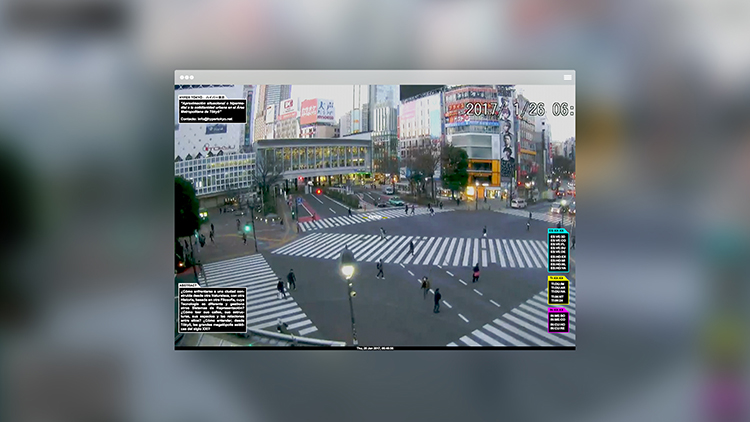
HYPER TOKYO
– Diego Iglesias Gómez and Cristóbal Baños Hernández
HYPER TOKYO is a hypermedia platform that gives access to ongoing research on urban daily life in the Tokyo Metropolitan Area.
In today’s information society data is updated extremely quickly, and many new sources are discovered with every new search. Tons of pieces of information accumulate in our devices, therefore those research formulas seeking to draw static paths on a cloud of information, which is recomposed with each new upload to the internet, have just become obsolete.
This research project is constructed from the most immediate present, connecting diverse fragments of information and identifying those systems that conform to urban daily life in the Metropolitan Area of Tokyo, from a situationist and hypermedia approach. A virtual space (www.hypertokyo.net) of over 10 GB of more or less coded information, including photographs, images, videos, diagrams, drawings, texts and quotations; establishing complex and mutant relationships between seemingly unrelated data that incorporate different nexuses and approaches to nature, time, tradition, regulations, customs, technology, or public space.
A hypertextual strategy that helps understand how Tokyo has reached its current situation, constructed by the superposition of temporary layers that are constantly updated. A model in continuous expansion that develops under the uncertainty of natural disasters and that is able to manage the risks that these imply. A city that forces its inhabitants to live in continuous movement through complex temporal dynamics which rely on a succession of urban interiors, the infrastructure for nomadic lifestyles. A singular overloaded image that is able to incorporate all the elements that have built its history and those building its most immediate present.

1. www.hypertokyo.net

2. Hyper Tokyo’s cloud of information.

3. [left] Construction of the information cloud. Step 1: identification of differential elements in 9 immersive contemporary photographs of the Tokyo Metropolitan Area.
4. [right] Construction of the information cloud. Step 2: visual association of quotes, images, laws, diagrams, studies and other media to the discretized elements.

5. [left] Construction of the information cloud. Step 3: identification of transversal concepts and themes through categorization across the cloud of information.
6. Construction of the information cloud. Step 4: [right] Design and construction of hypermedia structure capable of showing this information: www.hypertokyo.net

7. Zoom into the three-dimensional cloud of information.

8. Global view of the three-dimensional cloud of information.

9. www.hypertokyo.net
References
— Kajima, M., Kuroda, J. and Tsukamoto, Y. (Atelier Bow-Wow) (2001) Made in Tokyo. Tokyo: Kajima Institute Publishing Co.
— Barthes, R. (1982) The Empire of Signs. New York: Hill and Wang.
— Gill, T. (2000) Unconventional Moralities, Tolerance and Containment in Urban Japan. In: I. Pardo, ed., Morals of Legitimacy: Between Agency and the System. New York: Berghahn Books.
— Ito, T. (1993) A Garden of Microchips: The Architectural Image of the Microelectronic Age. In: JA Library 2, Tokyo: Shinkenchiku.
— Koolhaas, R. and Obrist, H., (2011) Project Japan: Metabolism Talks. Köln: Taschen.
— Vásquez Rocca, A. (2004) El hipertexto y las nuevas retóricas de la postmodernidad. Philosophica 27.
+
All images have been created by HYPER STUDIO.
Cristóbal Baños is an expert in design for new media and digital environments, interaction developer and professor working between the physical and the digital realms. He has a degree in Design by the Complutense University of Madrid and a Master’s degree in Web Development from CICE. Co-founder and technology director at HYPER STUDIO.
Diego Iglesias is an architect, culture manager, communicator, researcher, professor and interdisciplinary designer working between the physical and the digital realms. He has a degree in Architecture from the Polytechnic University of Madrid and a Master’s degree in Culture Management from the Fundación Contemporánea. Co-founder and creative director at HYPER STUDIO.
HYPER TOKYO
HYPER TOKYO on Vimeo
Volume 3, No. 2 June 2020
